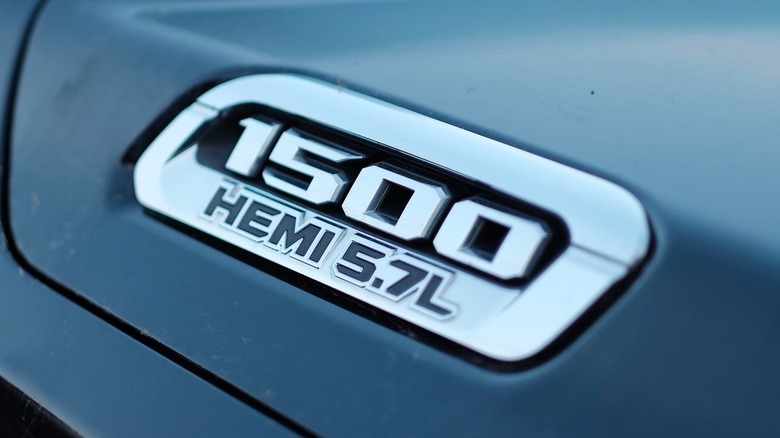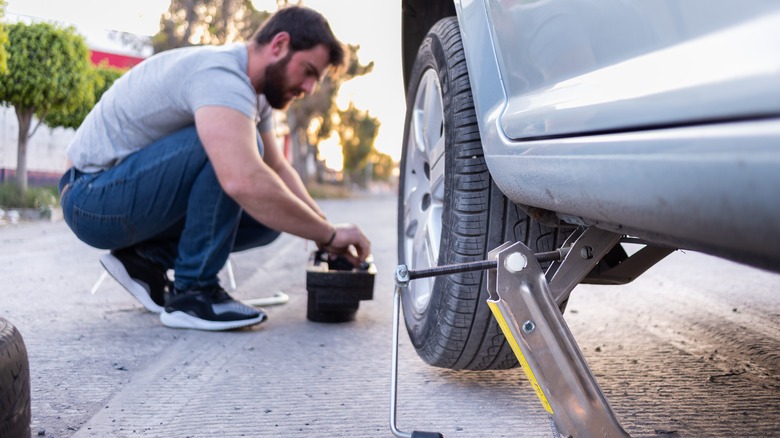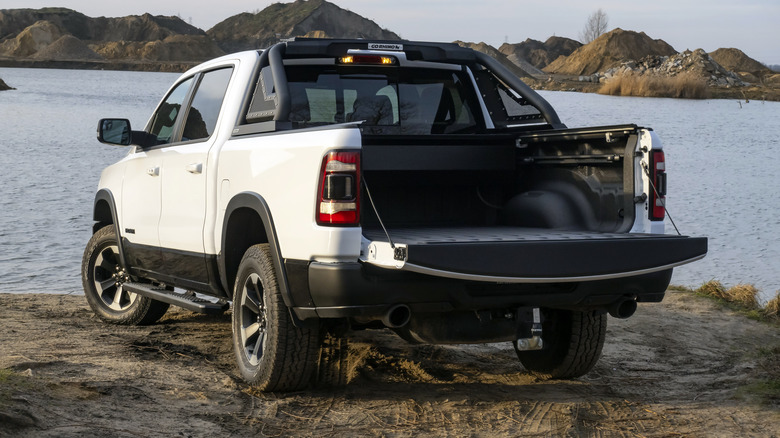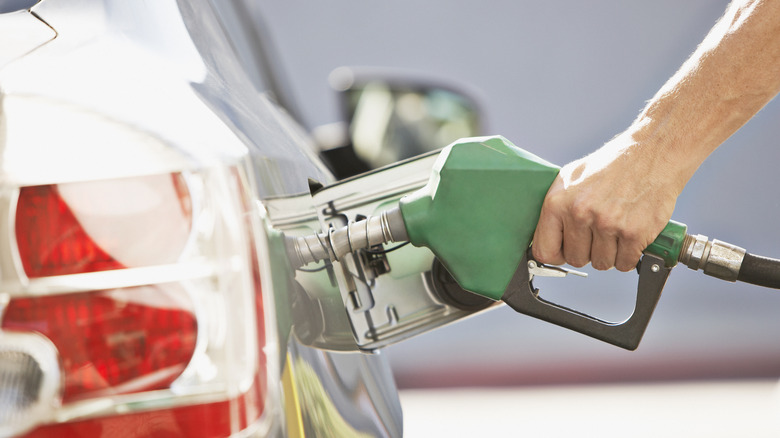5 Tips & Tricks To Increase The Fuel Efficiency Of Your HEMI Engine
Chrysler's HEMI engines have been around since the 1950s, but they were used as early as 1905 by car manufacturers like Pipe. Over time, these engines have become an appealing choice for car manufacturers and buyers because they maximize performance and speed and can stand the test of time. It's unsurprising that numerous brands, from Dodge to Jeep, have used HEMI engines in their vehicles. While these are some of the many positives of the HEMI engine, the trade-off is lower fuel efficiency compared to smaller engines.
While this limitation is easy to ignore if you don't use your vehicle too often or if performance is your top priority, frequent gas station stops can quickly become frustrating and expensive if you commute long distances often. Given this, we've put together a few practical tips and tricks that you can implement to increase the fuel efficiency of your HEMI engine vehicle so you can enjoy its power without worrying about fuel costs.
Check if the MDS is functioning correctly
A number of HEMI engines today use cylinder deactivation systems like MDS, which is short for Multiple Displacement System, to improve fuel economy. If you have a vehicle with a V8 engine, MDS will turn off four of the eight cylinders without you noticing a significant reduction in power or speed. This deactivation of half your engine's cylinders reduces pumping losses, which, in turn, increases fuel efficiency. Simply put, fewer cylinders operating means less air being pumped in and out, which means less energy being used. This is what causes the bulk of fuel savings with an MDS.
However, for this system to work effectively, the MDS lifters will need to function correctly. While various things can cause the MDS to malfunction, the most common cause is contaminated oil. When contaminants block the lube circuit, the MDS lifter may not be able to engage and disengage effectively. This can result in the system not switching to the fuel-saving model, which, in turn, means you don't benefit from any possible fuel savings that this sort of technology can provide.
The easiest way to avoid problems with the MDS is to perform regular oil changes and take your car for timely maintenance checks to identify any potential issues with the MDS early on, rather than waiting until a complete MDS lifter failure has occurred. If the MDS has already failed, you might be able to swap it out for new lifters, especially if your powertrain warranty is still active.
Drive conservatively
Speeding has a pretty significant impact on fuel efficiency. The U.S. Department of Energy notes that reducing your speed by 5 to 10 mph could improve fuel economy by 7%–14%. So, while speeding may sometimes be unavoidable, it's best to slow down and try to stay as close to the speed limit as possible. An easy way to maintain a steady pace, especially when you're on the highway, is by using cruise control unless, of course, it's an emergency.
While driving, it's also a good idea to limit idling, which is when you leave the engine running despite your vehicle not being in motion. When you're stuck in traffic, idling is sometimes unavoidable, but the fact is that idling consumes more fuel than turning the engine off and back on when you need to. This affects all vehicles, but larger vehicles will burn more fuel than smaller ones while idling. So, if you're expecting to stop for over 30 seconds or are parked and waiting for someone, it's best to turn off your engine.
Use low rolling resistance tires
Rolling resistance, as the name suggests, is the resistance your car's tires experience when in motion on the road. While rolling resistance is necessary for traction, too much can cause your vehicle to use up more fuel. One way to solve this issue is by getting low rolling resistance tires from a reputable brand. Even reducing the rolling resistance by just 10% can lead to a noticeable improvement in fuel efficiency, so consider asking your mechanic for recommendations on the best tire brands for your vehicle.
Apart from using a different type of tire, make it a habit to check your tire pressure and ensure that they're properly inflated. The U.S. Department of Energy states, "You can improve your gas mileage by 0.6% on average—up to 3% in some cases—by keeping your tires inflated to the proper pressure. Under-inflated tires can lower gas mileage by about 0.2% for every 1 psi drop in the average pressure of all tires." Remember, though, that overinflating your tires is not great either since it can increase rolling resistance, adversely affecting fuel efficiency.
Vehicle tire pressure can vary, so be sure to check the owner's manual or the sticker in the driver's side door jamb for the recommended tire pressure for your car. When you're inflating your tires, be sure to inflate your spare tire as well so it's available for you to use when you need it.
Reduce aerodynamic drag
When your vehicle moves, it has to push through the air ahead of it, which creates some amount of aerodynamic drag. The faster you drive, the higher the aerodynamic drag your car will encounter, which, in turn, means it will have to burn up more fuel to maintain pace. If you're trying to increase fuel efficiency, it can help to reduce the drag your vehicle has to encounter.
While manufacturers make design choices, like having rounded edges in the front of the vehicle, to reduce the effect of aerodynamics, you can also take certain steps to minimize drag. The easiest way to do this is by driving at a moderate pace, but adjusting your vehicle can also help. For instance, a roof rack or an uncovered bed can increase the aerodynamic drag. Removing such accessories and getting a bed cover can significantly affect your fuel efficiency. Similarly, using wider tires or driving with the windows down is also not great for aerodynamic efficiency. Fortunately, these issues are fairly easy to fix, given that you can always revert to narrower tires that are designed for your vehicle and keep the windows up, especially when driving at a faster pace.
Use the right type of fuel
Using the right type of fuel can improve your car's fuel efficiency. So, the next time you're at a gas station, check the octane rating and make sure you're using fuel with the right rating for your vehicle. If you have a HEMI engine, you may need to use fuel with an octane rating of 87 or higher for optimal functioning and better gas mileage.
Since HEMI engines are high-performance, using a lower-grade fuel than recommended can lead to performance issues. If you have an older vehicle, using lower-octane fuel will cause a knocking sound. While this might not be an issue in newer vehicles, the fuel could still damage the engine, and your mileage will likely suffer as well. Premium gas, especially fuel with an octane rating above 91, can cost more. However, using it will pay off in terms of engine maintenance and better fuel economy in the long term.





